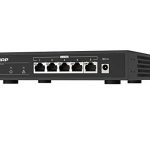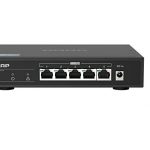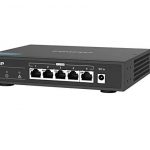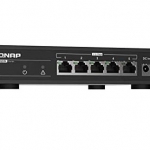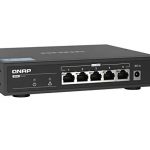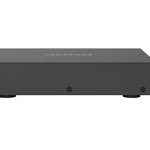Network and storage specialist QNAP has revealed the company’s first 2.5 GbE network switch. The new QNAP QSW-1105-5T 2.5 GbE network switch offers a balance between performance and cost.
With the QNAP QSW-1105-5T 2.5 GbE network switch, users can simply switch out their old hardware and connect the switch to existing cables, upgrading the network environment to take advantage of the improved transfer speed and connect “next-generation” 2.5GbE NAS devices and computers.
QNAP QSW-1105-5T 2.5 GbE switch is equipped with five 2.5GbE RJ45 ports and offers a simple plug and play installation and setup. Built-in features of the QSW-1105-5T 2.5 GbE network switch such as automatic loop detection, blocking and auto-negotiation functions offer users a simple and quick way to create a 2.5GbE network environment for the home or office.
The five 2.5GbE/NBASE-T RJ45 ports of the QSW-1105-5T are also backwards compatible with 1G/ 100M devices. In addition, the device supports auto negotiation to optimise transfer speed and performance of connected devices with a built-in management mechanism to ensure the transmission of network packets are handled smoothly.
Built-in network loop detection can automatically lock looped ports to allow the network environment to resume normal operation. The device also operates at near silent noise output levels due to the fanless design and unique ventilation assists cooling.
The QNAP QSW-1105-5T 2.5GbE network switch is available to purchase from Amazon UK now, priced at £108.
Discuss on our Facebook page HERE.
KitGuru says: Although 2.5GbE has been around for several years, it is only just beginning to filter into mainstream motherboards regularly now. Will you be upgrading your home network to 2.5GbE any time soon using one of these new switches from QNAP?
 KitGuru KitGuru.net – Tech News | Hardware News | Hardware Reviews | IOS | Mobile | Gaming | Graphics Cards
KitGuru KitGuru.net – Tech News | Hardware News | Hardware Reviews | IOS | Mobile | Gaming | Graphics Cards


